A Marae is a traditional meeting house — like the one in Waitangi where the treaty was signed.
The Treaty of Waitangi was signed in 1840 and was an agreement between the British Crown and a large number of Māori chiefs.
Today the Treaty is widely accepted to be a constitutional document that establishes and guides the relationship between the Crown in New Zealand (embodied by our government) and Māori.
The Treaty created a commitment to protect Māori culture and to enable Māori to continue to live in New Zealand as Māori. At the same time, the Treaty gave the Crown the right to govern New Zealand and to represent the interests of all New Zealanders.
In 1988, the Royal Commission on Social Policy suggested three principles relevant to education that came from the treaty — partnership, participation and protection. These principles were developed further for educational purposes to provide high-level standards, guide treaty partners (teachers/children/family) on communicating with each other, and understand the treaty as a whole — a commitment towards bicultural curriculum and development.
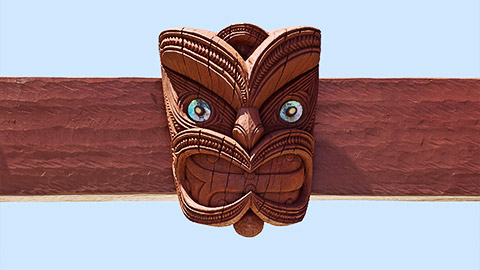
Detail of the entrance gate to the Waitangi Regional Park, New Zealand.
The three principles of the Treaty of Waitangi are at the heart of the relationship between the government and Māori. The principles come from the defining ideas of the Treaty and are used to bridge the gap between Māori and English texts, which can be interpreted differently due to language differences.
The three principles, also known as the three "P's", are Partnership, Participation and Protection.
Partnership principle
Partnership in this case means working together with iwi, hapū, whānau, and Māori communities to develop strategies for Māori education.
Partnership encourages and requires Māori to be involved at all levels of the education sector, including decision-making, planning, and curriculum development.
Partnership is:
- engaging with Māori community
- respecting sacred customs
- inquiry- and place-based learning — finding out about the Māori origins of your rōhe, mountains, rivers, history
- having Māori representatives on boards of trustees
- equity for Māori
- power-sharing.
The partnership relies on us welcoming and having genuine relationships with our Māori community. Historically, there have been Māori families that have not felt welcomed in schools. With an aim to reduce those incidences, the Ministry of Education is becoming a better partner. The result is that we are all working towards providing our children with a strong, meaningful curriculum taught in a respectful bicultural environment, representing the interests of all families who call Aotearoa, New Zealand, our home.
Sometimes these relationships take time and effort. For most communities, once they feel there is genuine relationship building, they will be more than happy to be a part of the school and add expertise.
Participation principle
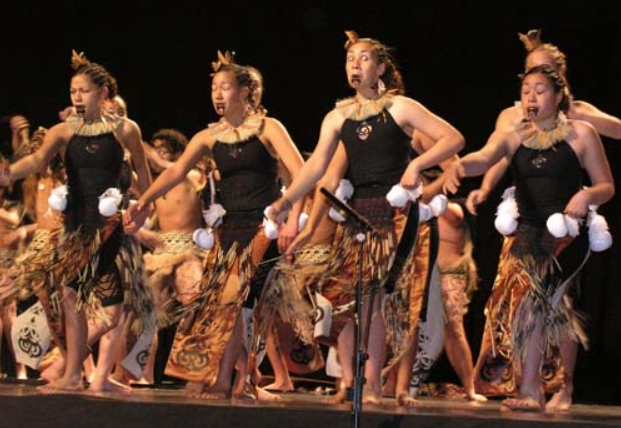
Schools in New Zealand include Kapa Haka in their curriculum and children from all different cultures living within Aotearoa enjoy participation. The kapa haka group pictured here performed at Kapahaka Rocks 2004, in Wellington, and is a combination of three schools from Ōtaki – Te Wharekura o Te Rito, Whakatupuranga Rua Mano and Ōtaki College.
As educators, we have a responsibility to emphasise positive Māori involvement at all levels of education. This is clearly expressed in National Education Goal (NEG) 9, which states that “Increased participation and success by Māori through the advancement of Māori educational initiatives, including education in Te Reo Māori, consistent with the principles of the Treaty of Waitangi.”
Participation is:
- working to strengthen home-school relationships
- Māori participating in school decision making
- school environment reflecting the biculturalism of Aotearoa
- aspirations of Māori whānau reflected in school planning
- equity for Māori.
If you begin working on strong partnerships, participation will happen naturally. Often, as soon as your whānau and community see that you genuinely want to move forward with Māori participation, people step forward to help. Coming from a place of honesty and wanting to make a difference for the ākonga puts you in a perfect space to be treaty partners. Māori participants are an asset to our school communities.
Protection principle
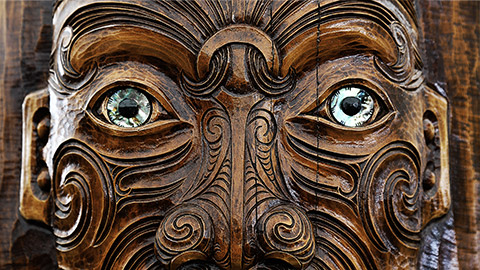
Protection means actively protecting Māori knowledge, interests, values, and other taonga. Identity, language, and culture are important expressions of what that looks like. It's important to establish that 'culture counts' and commit to knowing, respecting, and valuing where students are, where they come from, and build on what they bring with them.
Protection is:
- valuing, validating, and protecting local knowledge (place-based learning)
- normalising Te Reo Māori
- learning and including Tikanga school-wide
- equity for Māori.
As classroom teachers, we are able to implement these principles every day. Normalising Te Reo needs to happen not only in your classroom, but in staff meetings, the staff room, on duty, in assemblies, and other areas.
Adding a Māori perspective to topics and inquiry is an opportunity for us to weave tikanga and Māori viewpoints into everyday situations.
The three Ps from Te Tiriti o Waitangi already shape the policies and practices in the ECE space.
The principles of partnership, participation, and protection lead to practices. This section highlights the behaviours, rules, and customs we practice in order to protect our partnership.
Partnership practices
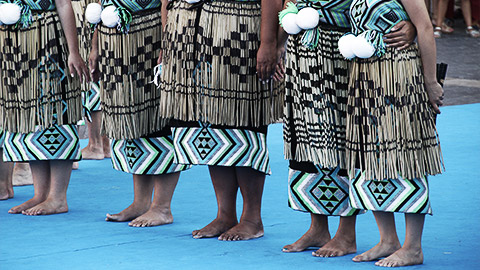
Partnerships rely on each player seeking a genuine understanding of each other's principles and values, and building relationships based on respect and trust. These women were performing in a Kapa Haka festival.
Case Study in change
As mentioned earlier, historically many Māori families have not felt welcomed in school — however, that's changing. Some schools invite the community to share rituals such as hāngī day, and pōwhiri ceremonies to welcome new or important people. Most early years classrooms have te reo labels identifying objects, colours, days and months throughout the room to help students learn the words passively.
In fact, a school's practices in advancing Te Reo are assessed as part of the Education Review Office's assessment criteria in New Zealand. It states:
In this, our system has a major role in supporting the revitalisation of te reo Māori, delivering on our commitments as Treaty partners and contributing towards a cohesive and inclusive society.
Within ECE centres, these relationships flourish when people make the effort to get the conversation started and keep it going. Our partnership starts with our Māori community, but it represents the idea that all customs deserve respect in our centres and services. Once someone feels a person is truly working to build a relationship, they will be more than happy to connect and bring valuable insight and wisdom to the conversations.
Creating a practice around people's culture and customs is a genuine way to build trustful relationships.
Activity - Reflect
Think about how the Partnership principle, from the Treaty of Waitangi, helps inform partnership-focused practices in your life and/or placement.
- What do you do to support your partners and what support do you depend on from them?
- How do you use your partnership to learn and grow in your work? Can you be doing more?
- How have your partnerships enabled you to learn more about the cultures that live in the community where you live and work? What practices have you seen, or can you put in place, as a result of that knowledge?
- What partnerships do you have in the community? How do they benefit your service, the tamariki in your care, and the community as a whole? What practices do you have that connect your centre or service to the community?
Participation practices
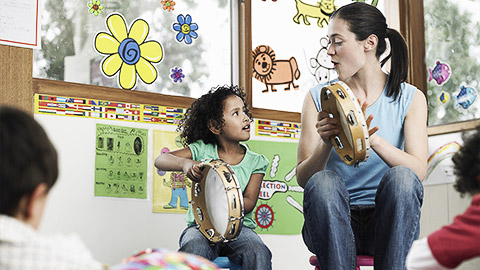
Participation in an ECE setting means getting involved. That can be in a group to accomplish a goal, or as a korero (discussion) with a sharing of ideas and wisdom, or independently strengthening your own skills, and learning something new to enhance your work.
If you begin building strong partnerships, participation will happen naturally. Presenting yourself as honest and genuinely wanting to make a difference for the ākonga (student) is the best way to become treaty partners with your colleagues, the tamariki and their parents, and the community as a whole.
Activity - Reflect
Reflect on what participation looks, feels, and sounds like in your service, and jot down an example of participation in your service.
For example, morning dance class
Looks like: All the tamariki and kaiako together dancing and having fun.
Feels like: No body is left out, everyone feels welcome and apart of the group.
Sounds like: high energy, fun and laughter
Use the forum to comment on the Participation post and review the input of others. You will find valuable information from the participation of your peers!
Protection practices
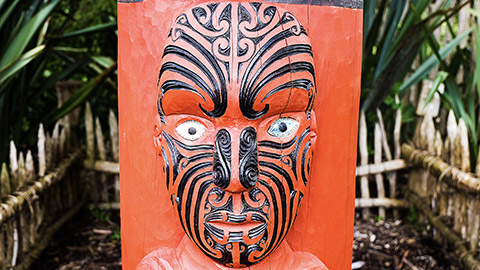
Protection means actively protecting Māori knowledge, interests, values, and other taonga. Identity, language, and culture are important expressions of culture. Protection is valuing, validating, and protecting local knowledge. The Māori carving depicted in this image would have been of a real person or deity, which is unfortunately to us, unknown.
Learning activities that you can do with tamariki today:
- Practice Te Reo Māori
- use it in class
- simple words (kupu), such as:
- kia ora (informal - hello)
- tena koe (formal - hello)
- ka kite (goodbye)
- simple words (kupu), such as:
- To ensure that Te Reo and Tikanga Māori are maintained, create posters, sing waiata, talk about the myths and legends.
- Māori words to start using regularly today. (Hint: use them in your assessments)
- tamariki – children
- e noho – sit down
- e tu – stand up
- aroha – love
- whānau – family
- mōrena – good morning
- koha – a gift
- kai - food
- ka pai - good job
- ka kite ano - see you later
- kaiako - teacher
- whaea - word for female teacher, ie "whaea Sophie"
- matua - parent(s), male teacher
This is just the beginning. Visit and bookmark kidspot.co.nz for more words and tips. A great way to learn Te Reo is to choose one or two words per week that are new to you and use them instead of the words in your own language.
This is for everyone, not just for ECE. In most places of employment throughout Aotearoa, NZ you are now encouraged to korero mai Te Reo Māori.
Kawa and Tikanga Māori
One of the ways many New Zealand schools show the protection principle is by observing certain Māori customs or behaviours, called Tikanga. Tikanga Māori are practices, rituals, rules, and ways of doing things that are done because of the belief system, Kawa.
The terms are more different than like. Kawa provides the logic, thoughts, beliefs, and values, while Tikanga describes the actions used to uphold the Kawa. The Māori word, Tikanga, is made from ‘tika’ which means ‘right’ or ‘correct’ so, in Māori terms, to act in accordance with Tikanga is to behave in a way that is culturally proper or appropriate.
It is described this way by Tūtira Mai - a website that helps people learn more about Maori language and customs.
Tūtira MaiWhat is Tikanga and Kawa? Te Reo Māori is the kawa. How Te Reo Māori is spoken (dialects) is the tikanga. Kawa is the policy and tikanga are the procedures on how the policy is realised. To put it simply, kawa is what we do, tikanga is how we do it.
The principles behind the Tikanga Māori practices we're showing here are common across New Zealand. However, different iwi (tribes), hapū (sub tribes) and marae (Māori meeting places) may describe each slightly differently. One of the ways your centre can practice the protection principle is to incorporate and establish Tikanga Maori and learn Kawa.
The information on the following activity cards was gathered from the Victoria University of Wellington.
Activity - Reflect
Think about how you protect Māori knowledge, interests, values, and other taonga in your service. Comment on the appropriate forum post with your thoughts about these points so your peers get the benefit of your participation and you get theirs.
- Do you do something that is different or unique in your service to protect and/or advance Māori culture?
- What would you like to do more of in your service?
- What would you like to learn more about, to help protect te reo and tikanga Māori?
